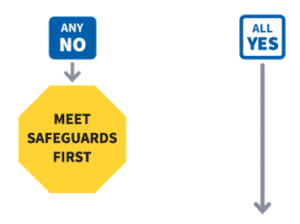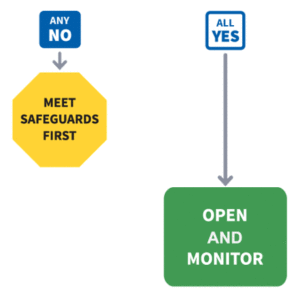Download this Health Update as a printable PDF
Overview
According to the Johns Hopkins University, as of June 1, 2020, the Coronavirus SARS-coV-2, has infected more than eight million people worldwide (2.1+ million in the United States) and killed more than 438,000 (116,000+ in the United States).
Source: https://coronavirus.jhu.edu/map.html
Treatment and vaccine update
Currently, there are 239 treatments being studied and 163 vaccines in development. There has been some speculation that a vaccine may be available as early as the beginning of 2021. Yesterday, the FDA revoked its emergency use authorization for hydroxychloroquine and chloroquine for the treatment of Covid-19.
Sources: https://www.fda.gov/media/138945/download and https://www.milkeninstitue.org/covid-19-tracker
Should you consider reopening?
- Will reopening be consistent with applicable state and local orders?
- Are you ready to protect employees at higher risk for severe illness?
Are recommended health and safety actions in place?
- Promote healthy hygiene practices, such as, hand washing and employees wearing a cloth face covering, as feasible
- Intensify cleaning, disinfection, and ventilation
- Encourage social distancing and enhance spacing between employees, including through physical barriers, changing layout of workspaces, encouraging telework, closing or limiting access to communal spaces, staggering shifts and breaks, and limiting large events, when and where feasible
- Consider modifying travel and commuting practices. Promote telework for employees who do not live in the local area, if feasible
- Train all employees on health and safety protocols

Is ongoing monitoring in place?
- Develop and implement procedures to check for signs and symptoms of employees daily upon arrival, as feasible
- Encourage anyone who is sick to stay home
- Plan for if an employee gets sick
- Regularly communicate and monitor developments with local authorities and employees
- Monitor employee absences and have flexible leave policies and practices
- Be ready to consult with the local health authorities if there are cases in the facility or an increase in cases in the local area

Source: https://www.cdc.gov/coronavirus/2019-ncov/community/organizations/workplace-decision-tool.html
Contact tracing
Contact tracing is a key strategy to prevent the further spread of COVID-19. Case investigation and contact tracing are core disease control measures that have been used by state and local health departments for decades to slow or stop the spread of infectious diseases. Contact tracing is an effective strategy that involves interrupting disease transmission—typically by requesting cases to isolate and contacts to quarantine at home voluntarily.
Prompt identification, voluntary isolation or quarantine, and monitoring of a person diagnosed with COVID-19 and their contacts can effectively break the chain of disease transmission and prevent further spread of the virus.
Source: https://www.cdc.gov/coronavirus/2019-ncov/downloads/php/contact-tracing-CDC-role-and-approach.pdf
Learn more
This health brief on the clinical topics and innovations surrounding the SARS-coV-2 virus and COVID-19 disease was prepared by Buck’s Health Intelligence practice.
For more information, contact us at 866-355-6647 or talktous@buck.com.
